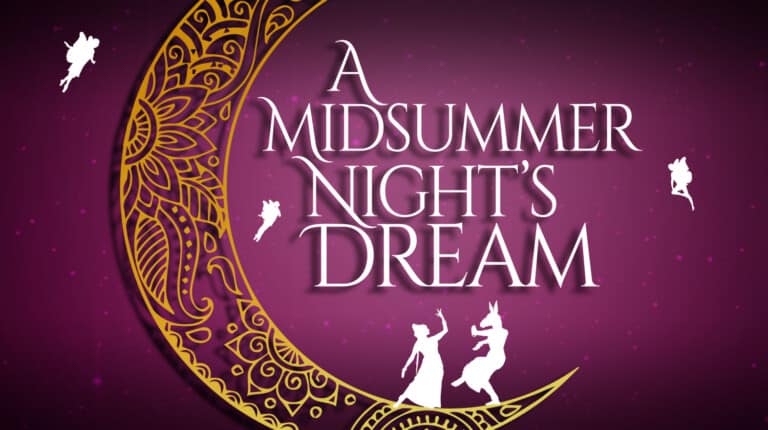Place of the play in Shakespeare’s work
A Midsummer Night’s Dream is one of the most famous and successful nplays by Shakespeare.
The play is part of the early work of Shakespeare (1554-1616), it was written and performed in 1595-1596, just after The Taming of the Shrew and The Two Gentlemen of Verona.
There is a connection between Pyramus & Thisbe and Romeo & Juliet: one character kills himself because he thought his love is dead (the tragedy of misunderstanding). It proves that Shakespeare could write a tragedy and a comedy at the same time.
In A Midsummer Night’s Dream, we have a tragedy within the comedy. The theme of rebelling children against their parents: 2 families at war but united through the love of their children.
Shakespeare could write in different moods at the same time: it goes very quickly from tragedy to comedy. Even in a comedy, there is a substance of truth, of seriousness. A comedy is not empty of meaning.
Shakespeare’s last play is The Tempest (1611) and it is regarded as his testament for prosperity. Ariel is a kind of fairy, like Puck. Both plays have the same background of magic and fairies, and the episodes lead to a moral favol as an explanation of life’s mysteries: the surface of events and the meaning of events (more important).
Sources of the play
A Midsummer’s Night Dream is one of Shakespeare’s most leaned plays. Lots of information he took here and there:
- Plutarch’s life.
- Ovid’s Metamorphosis: Shakespeare borrowed Titania, who appeared as Diana.
- Huon de Bordeaux (medieval French romance): Shakespeare borrowed Oberon.
- Chaucer, The Knight’s Tale (love story).
- and mythological references: Apollo…
Shakespeare put together all those apparently defragmented pieces to create an entirely original plot, which looks like a patchwork. His genius resides in the creation of something new in spite of the diversity of the elements.
Reception of the play
The play was not immediately admired.
18th century: the literary world showed skepticism towards it. It was the age of Reason and Enlightenment and the play had too little reason. 19th century: the judgments became more positive. Chesterton called it “the greatest of Shakespeare’s plays”. and Frank Kermade “Shakespeare’s best comedy”.
Why was it so popular ? Because it was most frequently performed and gave a lot of possibilities for stage directions. Shakespeare introduced a lot of singing and music so that it was easier for the audience and the actors to enjoy the play.
It is a comedy in which one past is hilarious but also a play with lots of ambiguities (position of women, position of the State). It is also a play with an usual modern dimension (sexual references).
The opening scene (Act I, scene 1, up to l.57)
It usually defines the setting and the characters and foreshadows what will come next. It can be divided into 2 parts:
1- the dialogue between Theseus and Hippolyta
2- Egeus’ complaint about his own daughter Hermia: we do not learn more about her but it is enough to show her determination.
A. Introduction scene
The Duke of Athens: enables Shakespeare to write about a very solemn character, a member of the royalty: he starts from the top characters to the lower characters.
Egeus is a well know name for it belongs to mythology although we may wonder if he is the same as the mythological Egeus. At least it rings with it.
There is no date: the Athens we are presented with is not 16th century but related to antiquity. It is not obvious how much the audience is aware about that: it addresses an educated audience.
We are given one aspect of Theseus (the statesman), far from the mythological killer of beasts. He suggests authority and love and has 2 dimensions: the statesman (public image) and the personal impending marriage (private). The theme of marriage is present in the very first sentence.
Hippolyta is the Queen of the Amazons. She has been vanquished by Theseus in one of his military fights: “I wooed her with my sword“: she was captured by him. We may question this relationship: it has to do with power and not love (the alliteration in “w” is not accidental).
Time: 4 happy days. The scene tells the audience that the wedding is due to take place in 4 days. In fact, the play would last two days and one night.
B. Human relationships
Egeus’ complaint is the story of a rebelling daughter, it is almost a monologue, deeply anchored in the myth of vexation: the rhetorical inversions are a way of giving more strength to vexation.
It is about a father/daughter relationship. And the theme of rivalry between the 2 young men Demetrius and Lysander:
- “Stand forth Demetrius”
- “Stand forth Lysander”
Each of them represents one conception:
- Demetrius: can marry someone even if there is love.
- Lysander: it should be based upon love.
Love is irrational. Hermia pleads for feelings and her father for reasons. Children should be totally subservient to their father: “As she is mine, I may dispose of her“. The play poses the problem of woman’s condition.
C. The Moon
The moon appears 28 times in the play. It is one of the richest symbols you can think of.
In the beginning, the moon is too slow to appear. It is the moon that gives blessing to their wedding.
“Pale companion is not for our pomp”: coldness, chastity, frigidity: the moon is sad and therefore incompatible with the spirit of mirth (incompatible with the play ?). The play is imbued with the spirit of night (A Midsummer Night‘s Dream), it i a kind of fantasy.
Summary of the plot
Theseus and Hippolyta are about to get married. A group of mechanicals want to prepare a play for their marriage. In parallel to that, Helena loves Demetrius who loves Hermia who loves Lysander. The Queen and King of the fairies, Titania and Oberon, have been quarrelling about a young motherless boy. The couple is split and she is strong will.
Oberon asked his servant Puck to drop some magic juice on Titania’s eyelids so that she would fall in love with the first person she wood meet: that would be Bottom, disguised in donkey by Puck.
Oberon also asked Puck to drop magic juice on Lysander and Demetrius but Puck makes a mistake: Hermia is rejected and Helena is loved by both Demetrius and Lysander. In the end, everything returns and finishes with 3 weddings.
The play: Pyramus and Thisbe. Pyramus finds Thisbe’s piece of cloth blooded as if Thisbe had been eaten by a lion and kill himself. Thisbe comes back and sees Pyramus dead. She kills herself.
Different interpretations
- theme of interest: lyricism and poetic beauty of the play.
- becoming aware of the violence and madness of the play.
- notion of power: political power (Duke of Athens), power relationships between men and women.
- interpretation of love: romantic presence of love or cynical interpretation of love (all delusion): which type of love is it ?
- fantastic dimension.
- very performing play : play action.

